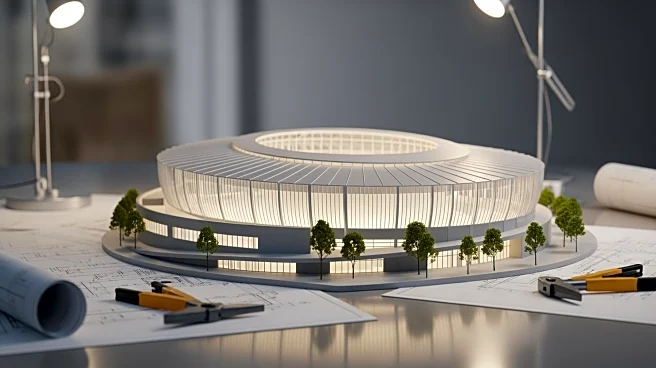What's Happening?
Bexar County voters in Texas have approved a measure allowing the San Antonio Spurs to build a new $1.3 billion stadium in downtown San Antonio. The measure, known as Proposition B, passed with 52% of the vote. The funding for the new arena will be a collaborative
effort, with Bexar County contributing $311 million, the city of San Antonio providing $498 million, and the Spurs themselves investing $500 million plus any cost overruns. This development is part of Project Marvel, which aims to revitalize the city's downtown area and establish a new sports and entertainment district at Hemisfair, the site of the 1968 World’s Fair. Additionally, voters approved $192 million in funding to renovate Frost Bank Center for the San Antonio Rodeo, which currently hosts events alongside the Spurs.
Why It's Important?
The approval of the new Spurs arena is significant for several reasons. It represents a major investment in San Antonio's infrastructure and entertainment sector, potentially boosting local tourism and economic activity. The development is expected to transform the downtown area, creating a vibrant sports and entertainment district that could attract more visitors and events. For the Spurs, the new arena could enhance their brand and provide a state-of-the-art facility for their games, potentially increasing attendance and revenue. The project also reflects the community's support for the team and its role in the city's cultural and economic landscape.
What's Next?
The construction of the new Spurs arena is anticipated to take up to five years, aligning with the team's strategic plans and future aspirations. As the arena is developed, the Spurs will continue to play at Frost Bank Center until their lease expires in 2032. The team is expected to leverage the new facility to enhance their competitive edge and fan experience. Meanwhile, the increase in hotel rental and car rental taxes will help fund the project, impacting local businesses and visitors. The Spurs' performance, led by rising star Victor Wembanyama, could further boost interest and support for the team as they transition to their new home.
Beyond the Headlines
The development of the new arena raises broader questions about urban planning and community investment. It highlights the role of sports teams in driving economic development and shaping city identities. The project could set a precedent for other cities considering similar investments in sports infrastructure. Additionally, the tax increases to fund the arena may spark discussions about the balance between public and private funding for large-scale projects.
















